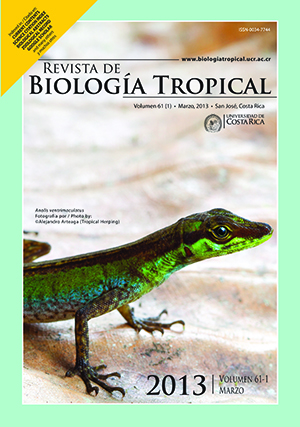Abstract
Spatio-temporal variation of subtidal meiofauna in a sandy beach from Northeastern Venezuela. Meiofauna organisms that play an important role in the trophic ecology of soft bottom benthos, have short life cycles and they respond quickly to disturbance and pollution. The present study shows the spatio-temporal variation of subtidal meiofauna (metazoans passing a 500μm sieve but retained on meshes of 40-63μm) in four shallow subtidal stations. Samples were taken in the sandy beach of San Luis, in the Northeastern coast of Venezuela, from October 2005 until September 2006. For this, three replicate sediment core samples (4.91cm2), were collected monthly to a depth of 10cm into the sediment, and preserved in 6% formalin stained with rose Bengal. Specimens of 14 meiofaunal groups (Foraminifera excluded) were collected, being the nematodes, ostracods and harpacticoid copepods the most abundant. Monthly density was comprised between 64 and 503ind./10cm2, and mean density of stations between 173 and 449ind./10cm2. There is a trend of low densities from October to February (end of the rainy season until the middle of the dry season). The San Luis beach control of the meiofaunal community is shared by climatic conditions and by the biology of the species found. The meiofauna mean density in San Luis beach (263ind./10cm2) was low when compared to other studies in tropical areas.##plugins.facebook.comentarios##
Downloads
Download data is not yet available.






